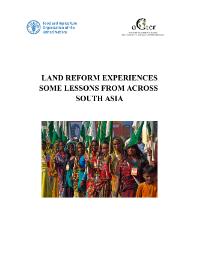Resource information
This study draws on some case studies of land reforms in different South Asian countries. These reforms came on the national and international agenda in a major way in the post- World-War II period and were led by the transition theory, requiring agriculture to provide both surplus and labor for the growth of a modern industrial economy and leading to focus on efficiency in agricultural production (which would release resources -capital and labor- for investment in the modern industrial sector), rather than on distribution. The study also attempts to assess the role of peasant organizations and civil societies in bringing land reform issues to the forefront. Though the State is the main actor in the land reform process, the role played by peasants, workers, in fact the society as a whole, should not be underestimated.



